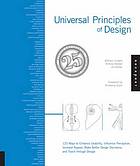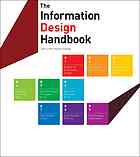The process of design
Read these to prepare for class discussion

-
Universal principles of design
Development Cycle, 78 -
Gulliksen, J., & Göransson, B. (2003).
Key principles for user-centred systems design. -
Glance at, but don't get too bogged down in
Chapter 42. Design 4 All, through 42.2.2 Diversity in the technological environment, a part of
ERCIM International Workshop on User Interfaces for All, User-centered interaction paradigms for universal access in the information society: Stary, C., Stephanidis, C., & European Research Consortium for Informatics and Mathematics. (2004). 8th ERCIM Workshop on User Interfaces for All, Vienna, Austria, June 28-29, 2004 : revised selected papers. Berlin: Springer.
[top]
User Centered Design Models

Often associated with human-computer interaction and ergonomics, this philosophy can also be use in the development of artifacts that are interactive, print-based, or three-dimensional. ... There are many process models for user-centered design, but they all share common themes ...[ISO 9241-210][pages 25-26]
- Specify the context of use
- Specify the user and organizational requirements
- Produce design solutions
- Evaluate designs against project requirements
[top]
Optional readings which may come up in class discussions
Bias, R. G., Kortum, P., Sauro, J., & Gillan, D. (November 01, 2013).
Clothing the naked emperor: The unfulfilled promise of the science of usability.
Interactions, 20, 6, 72-77
[PDF]
Gulliksen, J., Göransson, B., Boivie, I., Vlomkvist, S., Persson, J., & Cajander, A. (2003).
Key principles for user-centred systems design.
Behaviour & Information Technology, 22(6), 397-409.
[PDF]
Read about the key principles - section 4, p401-403.
Thackara, J. (2001).
The design challenge of pervasive computing.
interactions, 8(3), 46-52.
[PDF]
With particular attention to the "Articles of Association Between Design, Technology, and The People Formerly Known as Users" on p.50.
[top]

